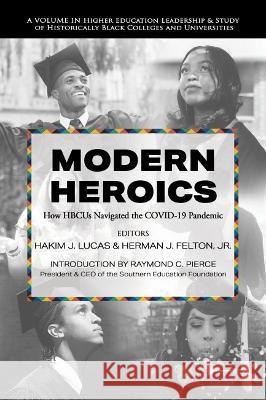Modern Heroics: How HBCUs Navigated the COVID-19 Pandemic » książka
Modern Heroics: How HBCUs Navigated the COVID-19 Pandemic
ISBN-13: 9781648029721 / Angielski / Miękka / 2022 / 152 str.
Modern Heroics: How HBCUs Navigated the COVID-19 Pandemic
ISBN-13: 9781648029721 / Angielski / Miękka / 2022 / 152 str.
(netto: 303,40 VAT: 5%)
Najniższa cena z 30 dni: 302,25 zł
ok. 13-18 dni roboczych.
Darmowa dostawa!
It is said that crisis is the true test of a leader. The leaders who contributed to this volume and their peers at HBCUs nationwide were tested in unprecedented ways by the events of 2020 and 2021. The crisis caused by COVID-19 was unique in its wide-ranging effects, its duration, and the need for a multi-pronged and comprehensive response. This was a test to challenge even the strongest leaders. Accustomed to challenges and to adversity, the leaders of our nation's HBCUs stepped up, marshalled their forces, and developed and implemented plans to mitigate and to combat the impact of COVID-19 on their institutions and on African American higher education.
While each president who contributed to this volume brought their own unique perspective, skills, and experience to the crisis on their particular campus, they confronted common challenges. Racial disparities in the United States affect every aspect of life, and the pandemic magnified and exacerbated those disparities. The racial disparities that we see in our health and health care in this country are evident in the numbers of African Americans, including college students, who contracted the virus and who suffered significant health ramifications and even death. At the same time, COVID-19 forced our nation online and the racial and economic digital divide which some thought had been bridged turned out to be wider than ever. As jobs were lost, particularly in service industries and other key sectors, people of color, especially Black and Brown people, took a disproportionate economic hit.
Not only did HBCU leaders have to develop and implement plans to mitigate COVID's deadly threat to the health and safety of their students, faculty, and staff, they also had to address the challenges associated with trying to provide remote learning for students who lacked computers and internet access at home; transporting students back home who didn't have the resources to pay for transportation; and in some cases finding housing for students who could not return home or didn't have a home or sufficient food, among other issues.











